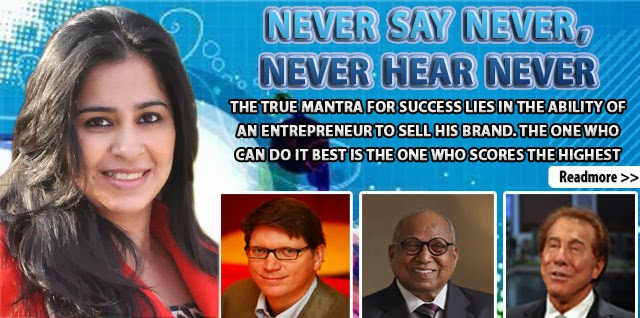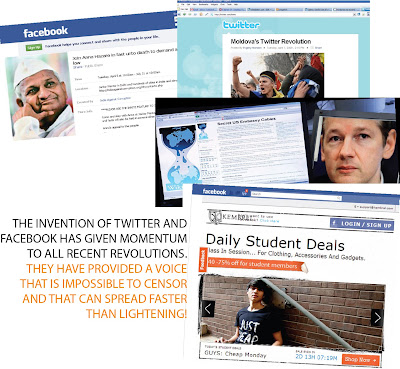A “Che” t-shirt
The power of a merchandising idea, brilliantly conceptualised and executed, truly knows no bounds. In fact, it can decisively tilt the advantage in your favour
When it comes to football clubs “Real Madrid” is now the richest club, beating Manchester United, who were the richest for 8 years and for the first time slipped to the second spot. Real Madrid, which won the Spanish Liga last season, saw its revenues leap 20 percent to 351 million euros during the 2006/07 season, while Manchester United posted revenues of 315 million euros, (according to a survey done by the accountancy firm Deloitte). One of the main reasons for Real Madrid’s increase in revenues was David Beckham. It is not so much the number of goals he scores but the number of shirts he sells, which makes him such a hero among marketers and fans alike.
Real Madrid had great players, but that’s not enough in today’s world. It needed someone who could bring sponsors to their stadium. It needed someone who could charm and entertain the spectators with his skills on the field. It needed David Beckham and didn’t hesitate to pay a huge price for him. Real Madrid’s revenues from club merchandise (shirts, caps et al) jumped 67 percent in Beckham’s first season alone. Suddenly, Real Madrid started earning more from tickets sales, television deals and other promotional activities. Its overall commercial income, which includes money deals from sponsors like Adidas, Pepsi et al now stands at £80 million a year. When Beckham was with Manchester United, it was the richest club; today it’s Real Madrid. This is the “Beckham effect” and marketers & merchandisers are loving it.
Yao Ming, the very popular Chinese basketball player, was purchased by an American basketball club. The reason? They had no reach or influence in the Asian market and Ming could help them get it, for soon after Ming’s transfer NBA (National Basketball Association of America) opened merchandise stores all over Asia. Looking at NBA’s success, Seattle Mariners purchased Japanese National Baseball player Ichiro. Tourist flow from Japan has increased significantly to Seattle since then. Not to mention the fact that Ichiro merchandise happens to be one of the top selling merchandise in the league!
Merchandising all the way
Back in the 80’s, Steven Spielberg made a film on a relatively small budget of $10 million. The movie grossed $12 million almost in its opening weekend. However what’s more spectacular is the fact that it set a new standard for movie merchandising. The children went crazy buying everything from its pyjamas to lunchboxes to alarm clocks to bubble gums – whatever was on offer. You guessed it… the movie was “E.T.”, which made $1 billion in merchandise revenue alone.
Merchandising is developing into a big money spinner, which can’t be ignored any longer. Think of it, Spiderman alone accounted for some $132 million in merchandise revenue last year. Saawariya might not have worked well at the box office inspite of Ranbir Kapoor’s “towel-tease-act”, but Big Bazaar is grinning. Saawariya branded white towels did better sales than the movies weekend box-office ticket-sales. A successful movie means millions but much of this money comes not from ticket sales or even video rights but from licensing and merchandising – more so in the animated ones. Look at how intelligently Warner Brothers used its DC Comics characters Batman & Superman. Before 1989, Batman movies averaged at less than $120 million a year in merchandising revenue. Since 1989, the company has sold more than $4 billion in Batman merchandise.
Not just movies, merchandising seems to work well for a whole lot of other businesses too. Today it’s become an invaluable marketing tool. It helps increase the brand exposure.
Bollywood too, slowly but surely, is waking up to the market potential of merchandising. A trend was started by the Barjatyas back in 1994 when they tied up with Archies for merchandising their blockbuster “Hum Aapke Hain Kaun.” If Spiderman sold goods worth Rs.1.2 crore in the Indian market, then Hanuman figures made Rs.1 crore. If Salaam Namaste made funky coffee mugs popular then “Krrish dolls” were loved by kids. Jadoo tried to do an E.T. and brought out tiffin boxes and stationery, which did decent business. The trend is picking up in India too. Not surprising then, that Yash Raj has launched a new division – Yash Raj Films Merchandise, and Reliance Big Entertainment, a new player in moviedom, is already charting out detailed merchandising strategies. It has already started working on various merchandising options as it readies to start work on its Rs.65 crore, 3D animation movie “Sultan” starring Rajnikant. In animation (the biggest money spinners of today) especially, 18-20 percent of the films’ revenues are from the box office; the rest come from merchandising and Indians too are realising this. Gone are the days when you went to your neighbourhood tailor with a photograph of a dress worn by a heroine and asked him to replicate it. Today you can walk into a Pantaloons (Kkrish) or Shopper’s Stop (for Om Shanti Om) or Pepe (Dhoom 2) and pick up your favourite.
It’s a fashion of passion
Merchandising allows fans to convey their passion and appreciation. Be it sports or movie stars or animated characters, this is one business, which attracts people of all age groups, class, colour & gender alike.
Teenagers have always been huge fans of sporting merchandise; wanting to wear their favourite player’s jerseys. Nike made fortunes with its Air Jordan range; Adidas and its Greg Norman range of golfing accessories are a hit among the middle-aged.
Merchandising is a reflection of the passion the fans feel for their stars. When Britney was at the peak of her career, her merchandising sales averaged $150,000 to $170,000 for each night of her American tour. Many artists are using this to quickly leverage the height of their fame. Jennifer Lopez has her own clothing line, her own perfume brand, which does brisk business for her.
The Indian Premier League (IPL) is hoping to generate the same amount of fervour as football clubs of Europe or the English Premier League. They are hoping that IPL merchandising will catch on too. So Videocon, whose brand ambassador is Shahrukh Khan, plans to retail Shahrukh branded T-shirts, sunglasses, travel bags et al in its retail stores like Next & Planet M., Shopper’s Stop, Reliance Retail too are working out plans around IPL merchandise.
Great ideas, popular faces is what merchandising is all about. After all, Harry Potter is not just a popular book series, which made its author J. K. Rowling a billion dollars, but it’s also a toy-merchandising machine, which helped the toy company Mattel sell Potter paraphernalia worth $150 million, it also helped Johnson & Johnson sell band-aids and cologne!
Fashion for a cause
Cause-related merchandising is now a big hit with consumers. Recently, Laura Bush launched a jute-bag exclusively in Harrods which said “buy this it would help feed two children for a year in Africa.” Last year Audrey Hepburn’s Children’s Fund organisation launched a simple canvas bag for $825. These limited edition “Audrey Bags” were made to help children and even though priced ridiculously high they sold well.
However if there is one face that can sell anything, anywhere in the world, it is that of a revolutionary. It’s of the Argentinian superhero Che Guevara – a communist who fought for justice. Today a “Che-t-shirt” has become a symbol of protest of rebellion against the abuse of power. When Lebanon protested against Syria, the people carried images of Che. When soccer hero Maradona went to visit Hugo Chavez, the communist leader of Venezuela, he showed-off his Che tattoo!
A 1961 photograph of Che taken by photographer Alberto Korda has today become one of the century’s most recognisable images and has found its way to a vast array of merchandise. Not many may know the man, his enigma, his philosophy, but many own a Che t-shirt.
A Che t-shirt is today a universal symbol of romantic rebellion. That’s the power of a great merchandising idea.
Fashion is taking on a whole new meaning today. It’s become a way of not just showing the world how you are looking but also how you are feeling. So design your merchandise intelligently and market it well. It has the power to take on the world. For a great idea knows no barriers… remember the appeal of a Che t-shirt.


Comments
Post a Comment